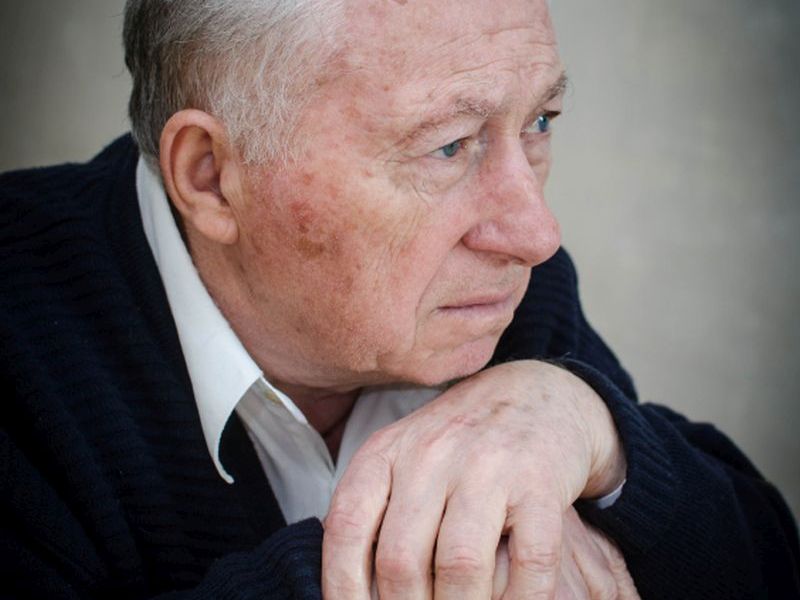One High Dose of Radiation May Be Enough for Early Prostate Cancer
By Steven ReinbergHealthDay Reporter

TUESDAY, April 30, 2019 (HealthDay News) -- Treating men with low-risk prostate cancer with just one high dose of radiation may be safe and effective, British researchers report.
Therapy for prostate cancer typically involves low-dose radiation given over several days or weeks. Conversely, high-dose radiation is given once through a set of tiny tubes inserted directly into the tumor.
"For low-risk patients, a single dose of high-dose radiation is sufficient, but for medium- and high-risk patients, a single dose of 19 Gy isn't enough. They will likely need a bigger dose or going back to multiple doses," said lead researcher Hannah Tharmalingam. She's a clinical research fellow at the Mount Vernon Cancer Centre in Northwood, England.
According to Tharmalingam, high-dose radiation could be more convenient for low-risk patients, and less time-consuming and costly for the medical system.
But one radiation oncologist fears that the side effects make it potentially dangerous.
For the study, Tharmalingam and her colleagues treated 441 prostate cancer patients between 2013 and 2018. The cancers were classified as low-, medium- or high-risk.
All of the men were treated with one high dose of 19 Gy of radiation, which is equivalent to the total amount of radiation given over several days with current treatments, Tharmalingam said.
In addition, 166 men were also given hormone therapy. None of the men, however, had surgery or chemotherapy.
For comparison, men with prostate cancer are normally given about 2 Gy of radiation at each of several sessions. Low-dose radiation is given to minimize side effects.
Over 26 months, the researchers measured the men's levels of prostate specific antigen (PSA), which indicates how well the treatment worked. If PSA levels increase, it might mean that cancer has returned.
After two years, 94% of the men remained cancer-free. Among men with low-risk cancer, it was 100%; among men with medium-risk disease, it was 95%; and in men with high-risk cancer, it was 92%.
But after three years, that dose of radiation wasn't enough for those patients with medium- or high-risk cancer, Tharmalingam said.
After three years, 88% of the men, overall, remained free of cancer. Specifically, it was 100% of the men with low-risk cancer, 86% of the men with medium-risk cancer, and 75% of those with high-risk cancer who remained cancer-free.
Among 27 men whose PSA levels rose, 25 had their cancer return. In 15, the cancer returned in the prostate, and in the others it had spread to other areas of the body, the researchers found.
When the men were treated, no serious side effects occurred. Later on, however, two men had urethral strictures, which can prevent urination and required surgery, and two patients developed rectal fistulae that required an operation called a colostomy.
Tharmalingam said that to improve the results of single high-dose radiation among men with medium- and high-risk cancer, other groups are experimenting with radiation doses as high as 23 Gy.
But for these patients, it might be better to go back to giving smaller doses of radiation over a longer time, Tharmalingam said.
Dr. Anthony D'Amico, a professor of radiation oncology at Harvard Medical School in Boston, doesn't think high-dose radiation is safe. D'Amico was not involved with the new study but was familiar with the findings.
"This single dose of radiation is very convenient and very well thought out in terms of killing the cancer," he said. "But there is no way to get around the one stumbling block, which is the follow-up of only three years."
A follow-up of three years in prostate cancer has very little meaning because it doesn't indicate what will happen over the long term, D'Amico said.
Even more troubling were the side effects seen in some patients, namely urethral strictures and rectal fistulae, he said.
"These are unheard of complications in the radiotherapy world in this day and age," D'Amico said. "You don't see those anymore because those things are the result of doses being way too high."
These side effects can take years to appear, so seeing even a few patients developing them so soon is very concerning, he explained.
"I would be very careful with this approach and I wouldn't recommend it," D'Amico said. "I'm worried about safety -- and this isn't something that's safe."
The findings were scheduled for presentation Monday at the meeting of the European Society for Radiotherapy and Oncology, in Milan. Research presented at medical meetings should be considered preliminary until published in a peer-reviewed journal.
More information
For more on prostate cancer, visit the American Cancer Society.

The news stories provided in Health News and our Health-E News Newsletter are a service of the nationally syndicated HealthDay® news and information company. Stories refer to national trends and breaking health news, and are not necessarily indicative of or always supported by our facility and providers. This information is provided for informational and educational purposes only, and is not intended to be a substitute for medical advice, diagnosis, or treatment.

